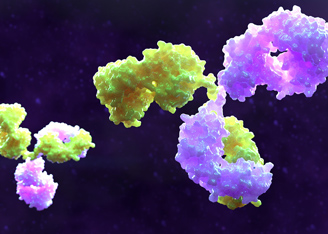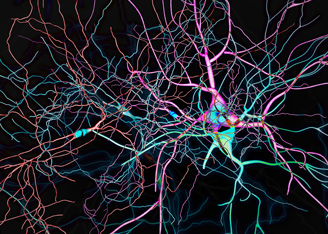-
REAGENT SERVICES
Hot!
-
Most Popular Services
-
Molecular Biology
-
Recombinant Antibody/Protein
-
Reagent Antibody
-
CRISPR Gene Editing
-
DNA Mutant Library
-
IVT RNA and LNP Formulations
-
Oligo Synthesis
-
Peptides
-
Cell Engineering
-
- CRISPR/Cas9 sgRNA
- CRISPR/Cas12a crRNA
- Prime Editing Guide RNA
- Base Editing Guide RNA
- HDR Templates
- gRNA + HDR Template Design Tools
- cGMP Guide RNA
- cGMP HDR Templates
- CRISPR/Cas Proteins
- CAR-T Knock-in Optimization Kit
- CRISPR Plasmids
- CRISPR gRNA Plasmid Libraries
- CRISPR Cell Lines
- Microbial Genome Editing
-
-
PRODUCTS
-
Most Popular Reagents
-
 Instruments
Instruments
-
Antibodies
-
ELISA Kits
-
Protein Electrophoresis and Blotting
-
Protein and Antibody Purification
-
Recombinant Proteins
-
Molecular Biology
-
Stable Cell Lines
-
Cell Isolation and Activation
-
 IVD Raw Materials
IVD Raw Materials
-
 Therapy Applications
Therapy Applications
-
Resources
-
- Pharmacokinetics and Immunogenecity ELISA Kits
- Viral Titration QC ELISA Kits
- -- Lentivirus Titer p24 ELISA KitHot!
- -- MuLV Titer p30 ELISA KitNew!
- -- AAV2 and AAVX Titer Capsid ELISA Kits
- Impurity Test ELISA Kits
- -- BSA ELISA Kit, 2G
- -- Cas9 ELISA KitNew!
- -- Protein A ELISA KitNew!
- -- His tagged protein detection & purification
- -- dsRNA ELISA Kit
- -- Endonuclease ELISA Kit
- COVID-19 Detection cPass™ Technology Kits
-
- Automated Maxi-Plasmid PurificationHot!
- Automated Mini-Plasmid PurificationNew!
- PCR Reagents
- S.marcescens Nuclease Benz-Neburase™
- DNA Assembly GenBuilder™
- Cas9 / Cas12a / Cas13a Nucleases
- Base and Prime Editing Nucleases
- GMP Cas9 Nucleases
- CRISPR sgRNA Synthesis
- HDR Knock-in Template
- CRISPR Gene Editing Kits and Antibodies
-
![AmMag™ Quatro Automated Plasmid Purification]() AmMag™ Quatro automated plasmid purification
AmMag™ Quatro automated plasmid purification
-
![Anti-Camelid VHH]() MonoRab™ Anti-VHH Antibodies
MonoRab™ Anti-VHH Antibodies
-
![ELISA Kits]() ELISA Kits
ELISA Kits
-
![Precast Gels]() SurePAGE™ Precast Gels
SurePAGE™ Precast Gels
-
![Quatro ProAb Automated Protein and Antibody Purification System]() AmMag™ Quatro ProAb Automated Protein and Antibody Purification System
AmMag™ Quatro ProAb Automated Protein and Antibody Purification System
-
![Target Proteins]() Target Proteins
Target Proteins
-
![AmMag™ Quatro Automated Plasmid Purification]() AmMag™ Quatro automated plasmid purification
AmMag™ Quatro automated plasmid purification
-
![Stable Cell Lines]() Stable Cell Lines
Stable Cell Lines
-
![Cell Isolation and Activation]() Cell Isolation and Activation
Cell Isolation and Activation
-
 IVD Raw Materials
IVD Raw Materials
-
![Quick
Order]() Quick Order
Quick Order
-
![Quick
Order]() Quick Order
Quick Order
- APPLICATIONS
- RESOURCES
- ABOUT US
- SIGN IN My Account SIGN OUT
- REGISTER

MonoRab™
GenScript’s premier rabbit antibody generation service Perfect for high affinity mAb’s against difficult Ag’s
News & Blogs » Antibody News » Walruses, Bats, and Humans Cuddle Their Young to Help The Brain Develop
Walruses, Bats, and Humans Cuddle Their Young to Help The Brain Develop
Humans and other primate-like animals all share numerous behavioral characteristics, including the means in which they mother their offspring. One commonality shared by these species is their conscious choice to lateralize their feeding and positioning behaviors to their offspring. Specifically, mothers seem to prefer to hold their offspring on their left side while feeding as well as ensuring that their young are looking at them using their left peripheral vision. This idea of behavioral lateralization is predicted to have numerous distinct advantages, including improved cognitive and motor abilities, increased escape ability, and a strong social intelligence. Particularly, when mothers use their left side to nurture an infant, the infant will respond by activating their right cortex; the brain region responsible for recognition of external stimuli, including emotions and social cues. For decades it was thought that humans and other primate like mammals were the only species to adopt the left-right bias with their young, however a new study has revealed that Pacific Walruses and Indian Flying Foxes also demonstrate this behavior. In this study, researchers analyzed key interactions between mother walruses and flying foxes with their offspring in order to identify if either generation showed a lateral bias. What they were able to identify, was that mother walruses predominantly chose to hold their offspring face to face and on their left side, ensuring that their left eye was in constant view of the infants left side. Interestingly, when infant walruses were floating by their mothers, they also chose to maintain a left sided field of vision with their mothers. This lateralization was identical to what researches saw when observing the Flying Foxes. Although upside down, the mother and child flying foxes also maintained a left sided viewpoint during face to face resting as well as during suckling. Taken together, the results from this analysis indicate that both mother and child make conscious decisions to maintain left-right lateralization. On a larger scale, the results also show that the left sided positional bias is not specific for primate like species, but could be a common feature of numerous species of mammals. This suggests that left sided bias not only enhances social processing, but is a strong evolutionary advantage for iteroparous species.
Genscript Antibody Services
Custom mAb Generation ServicesFlexible and Personalized high quality mAb generation
Learn MoreCustom Rabbit mAb ServicesBetter specificity and affinity, recognizing hidden epitopes
Learn MoreOne-Stop Solutions for Antibody Drug DiscoveryMake Therapeutic Antibodies Simple, Fast, and Safe
Learn More
- Fastest turnaround: as fast as 10 business days
- Lowest prices: starting at $840
-
Subscribe to Receive Updates
& Promotions From GenScript
* We'll never share your email address with a third-party.
Latest News & Blogs
Find More Antibody NewsIdentifying New Anti-PD-1 Monoclonal Antibody Drug Candidates

Synthetic Genes at the Forefront of Antibody Drug Discovery (ADD)

Therapeutic Antibodies Advancing Toward Approval for Clinical Use

Cerebral Organoids Provide a Platform to Screen Alzheimer’s Drugs

IL3 in Astrocyte and Microglia Communication: A Potential Therapeutic Target

Understanding AMPylation and its Role in Neurons





































